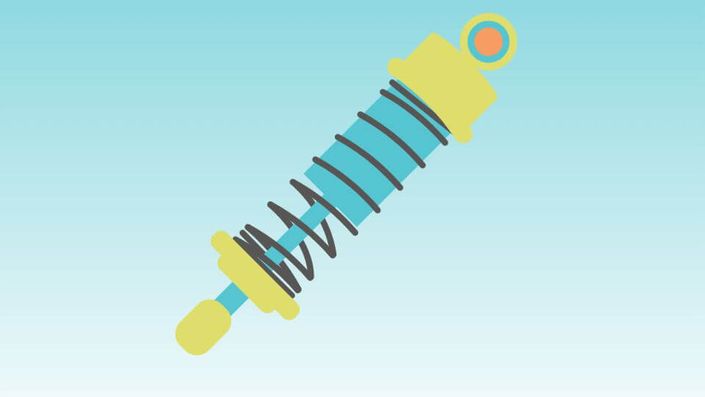
State Space Representation
The Ultimate Way to Model System Dynamics
Learn About State Space Representation
and
See if STEM Course Prep is Right for You
What is state space?
State space is a widely used technique that takes differential equations and transforms them to a set of lower-order equations in matrix form. One benefit of this technique is that numerical integrators such as Runge Kutta can be used to analyze the system. State space is used in many fields such as orbital mechanics, missile guidance, autopilot design, and dynamical modeling. It's a great concept to understand given its use in engineering!
Here's what you'll learn
Click here to see the full curriculum
What's included in the course?
- Over 1.5 hours of on demand video lectures
- 5 examples to improve your understanding and problem solving skills
- MATLAB examples and downloadable files that you can run yourself
- Downloadable outline of notes to help you create a set of organized notes and to follow along with the material
What's needed to enroll?
Just an email address.
No credit card is required
Course Curriculum
-
Start2.1 State Space Representation (17:46)
-
Start2.2 Example 24 (10:34)
-
Start2.3 Example 25 (8:35)
-
Start2.4 Example 26 (11:18)
-
StartMATLAB 3 State Space Numerical Integration (14:06)
-
StartMATLAB 4 Example 27 (8:12)
-
StartMATLAB 5 Example 26 (5:36)
-
Start2.5 Transfer Function to State Space (6:50)
-
Start2.6 Example 28 (7:48)
-
Start2.7 State Space to Transfer Function (7:30)
-
Start2.8 Example 29 (6:33)
Your Instructor

Teaching is my passion. As a University professor I have taught 1000's of students and watched them transform from freshmen into successful engineers. Unlike many STEM professors, I believe in teaching complex material in simple, easy-to-understand terms. I teach my courses in a way I wish I had been taught: straightforward lectures with plenty of examples on how to apply the theory being learned.
In addition to University experience, I also worked as an engineer for 8 years in industry at a well-known defense company. This experience enables me to focus in on topics that are actually applicable in the real world, not just textbook problems.
Come learn with me!
Is any prior knowledge needed?
Yes! The typical math requirement for this course is Differential Equations and Linear Algebra. Dynamics...you need to know that too, as we will be modeling bodies in motion.
MATLAB is helpful but not required - I kept all the MATLAB examples separate for students not interested in that material.
What's the format of the course?
Let me just say that I hate engineering courses taught with PowerPoint slides. Due to this, you will not find slides here.
I think people learn better when they have to write the material. That means the majority of my lectures are handwritten. I give you a brief outline of notes to help you follow along and to help minimize the length of the videos.
Speaking of video length... am I the only one who doesn't like watching hour-long lecture videos? I didn't think so.
To eliminate that frustration my lectures are broken up into shorter segments, typically 12-15 minutes.
And if you are here for examples, I made them easy to find. Almost all the examples are in their own videos, that way you can look through the notes and pick and choose which ones you want to watch.
